View more
The Bridge Schools initiative seeks to empower disadvantaged communities in Bangladesh by making education more accessible to children along coastal, disaster-prone regions. The project led by Quazi Wafiq Alam alongside a group of architects introduces community-based participatory design development workshops where school dropout children alongside parents and peers can engage in academic and extracurricular growth activities.
The schools are built across eight locations with protective frameworks comprising reinforced concrete columns and beams in a simple grid to ensure protective longevity and rigidity in the cyclone-prone areas. In their designs, they are modular and uniform, enveloped in vibrantly painted wooden panels to create an engaging and playful learning environment.
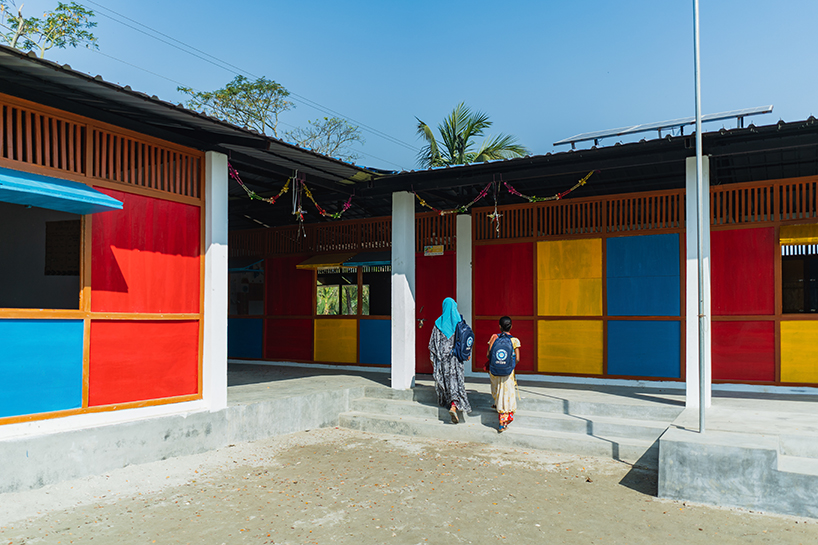 all images courtesy of the author
all images courtesy of the author
In coastal Bangladesh, access to formal children’s education is highly constrained due to the challenging socio-economic and environmental conditions. As a result, these areas face a significantly higher rate of dropouts in secondary education. Addressing this, the Community Development Centre — CODEC, supported by ERIKS Development Partner and Friendship is implementing the Showpner Thikana initiative to establish quality secondary educational services for those affected.
Eight Bridge Schools, built on lands contributed by their respective communities, have already been constructed and 341 children are currently admitted in an academic curriculum enriched with several extracurricular activities. The schools are developed in low-cost patterns with two typologies, one linear and the other L-shaped. Wood panels are used for enclosures and windows, meanwhile a steel structure composes the roofing. The architects designed the windows in such a way that they can provide ample natural light and ventilation into the classrooms on a regular day, while also being able to easily shut during cyclones. Cross ventilation is also ensured throughout with the integration of different levels to help regulate climatic comfort in the warmer months.
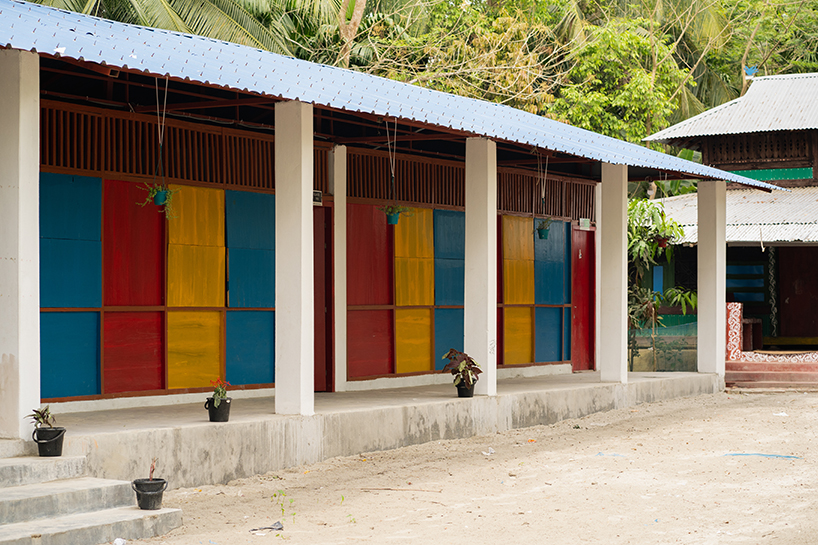 vibrant painted wooden panels create a lively learning experience
vibrant painted wooden panels create a lively learning experience
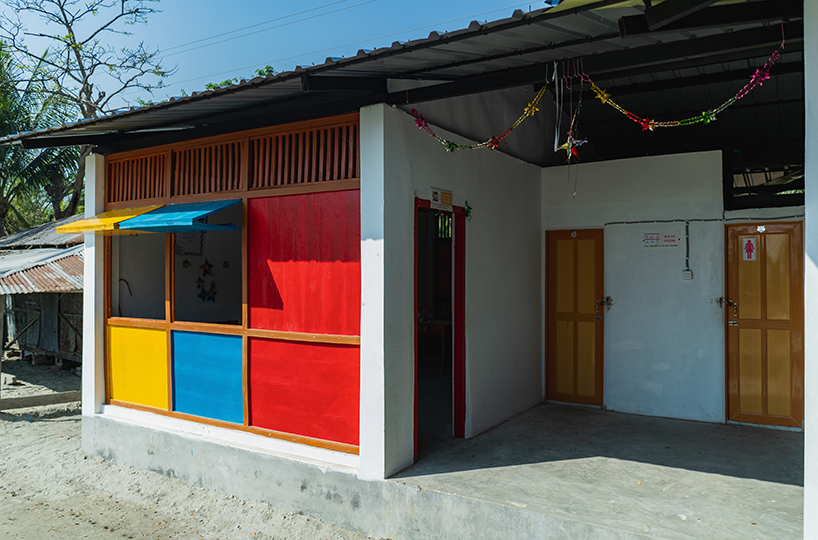 Bridge Schools initiative empowers disadvantaged communities in coastal Bangladesh with education
Bridge Schools initiative empowers disadvantaged communities in coastal Bangladesh with education
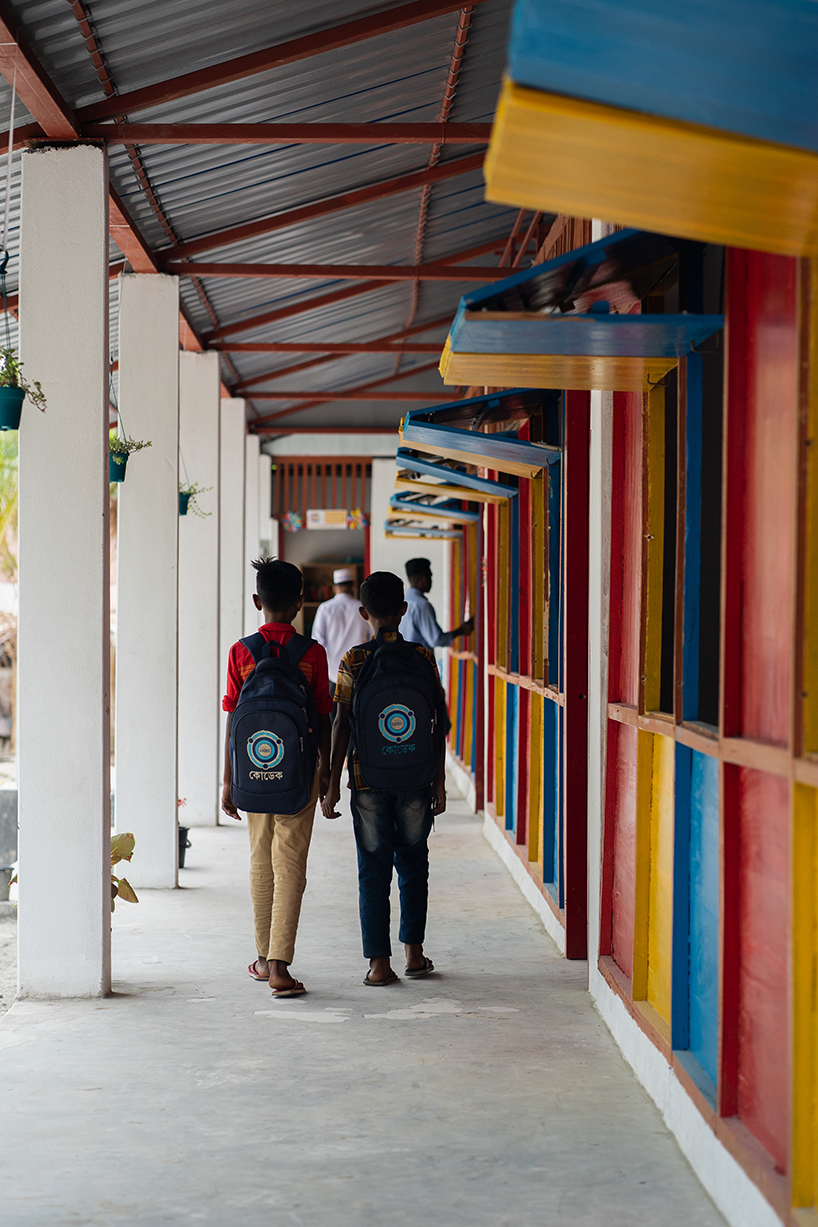 classrooms lined along the verandah
classrooms lined along the verandah
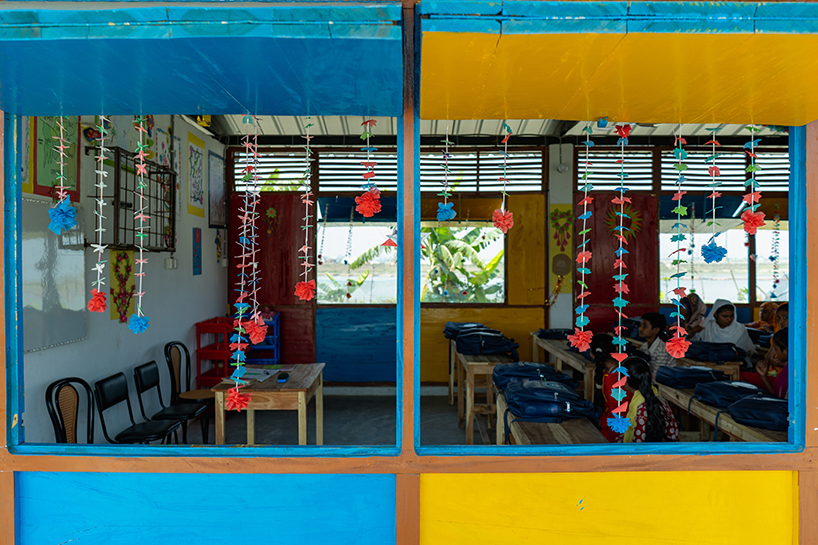 the cooling windows can easily be shut during cyclones
the cooling windows can easily be shut during cyclones
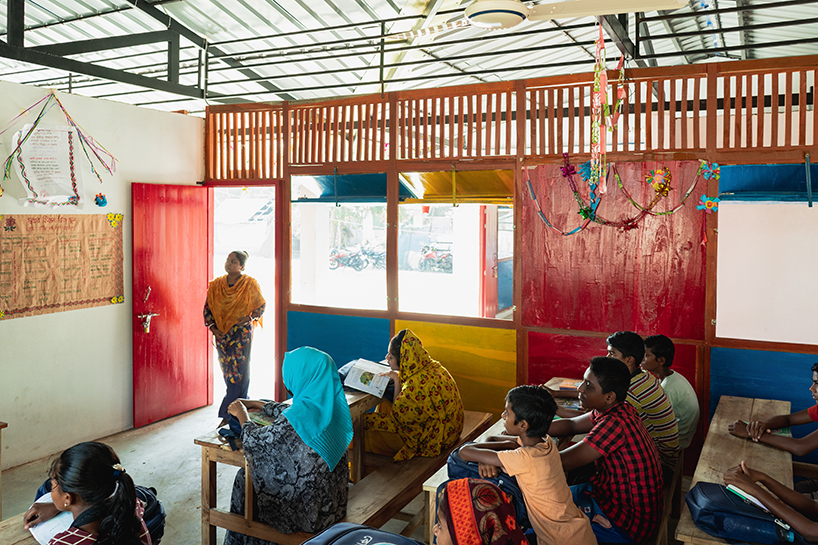 classroom topped by steel roofing
classroom topped by steel roofing
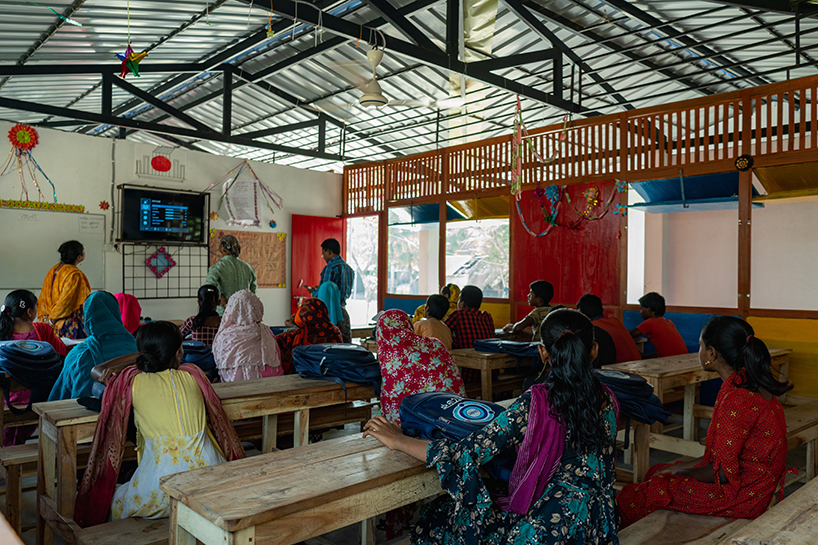 eight schools, built on lands contributed by their respective communities, have already been constructed
eight schools, built on lands contributed by their respective communities, have already been constructed
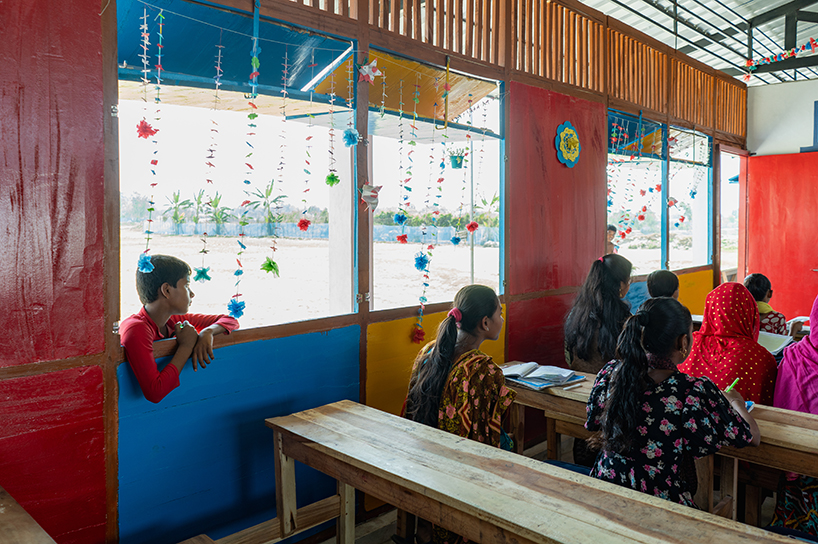
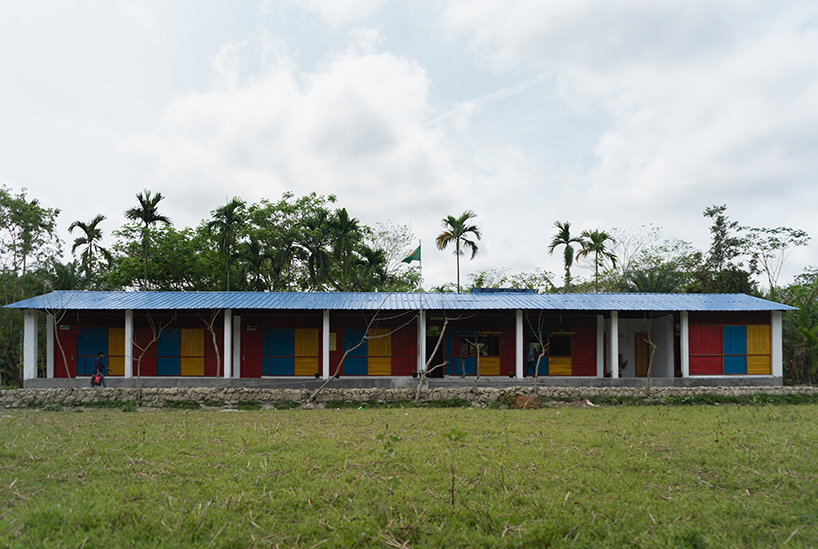 the schools are developed in low-cost patterns with two typologies, one linear and the other L-shaped
the schools are developed in low-cost patterns with two typologies, one linear and the other L-shaped
project info:
name: Bridge Schools
location: Bangladesh
lead architect: Quazi Wafiq Alam
architecture team: Hossenur Rahman Juwel, Nowshin Matin
structural engineer: Sauban Masud
edited by: ravail khan | designboom